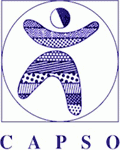The law has changed in recent years.
 (Updated January 3, 2020)
(Updated January 3, 2020)
On July 21, 2017, Governor Jerry Brown signed SB 621 into law. The bill’s provisions modified portions of California Labor Code Section 515.8 to update the salary test to determine the exempt employee status of private school teachers.
Before we explain those changes, here’s a quick history lesson that furnishes historical context for SB 621:
- Prior to 2006, California law was largely silent regarding the question of whether private school teachers could be considered exempt employees (as opposed to non-exempt, “on the clock” employees subject to overtime pay). A lawsuit brought against a private school in 2004 underscored the need for clarity in the law.
- In 2006, AB 2613 created California Labor Code Section 515.8, a new section of state law that established specific criteria to be met in order for a private school teacher to be deemed an exempt employee. One criterion was a salary threshold requiring exempt private school teachers to be paid no less than twice the state minimum wage on a monthly and annual basis.
- Had AB 2613 not been enacted, a private school teacher would still have needed to be paid a salary of not less than twice the state minimum wage in order to be deemed exempt. That was true because the existing state regulations governing professional exemptions contained the twice-minimum-wage requirement. As of January 1, 2007, Labor Code Section 515.8 superseded the aforementioned regulations in the specific instance of private school teachers. However, the twice-minimum-wage requirement also appeared in Labor Code Section 515.8.
- When AB 2613 was passed, California’s minimum wage was $6.75/hr. After legislation was enacted that will successively increase the state minimum wage to $15/hr. by 2022, it became clear that the twice-minimum-wage salary threshold for the determination of exempt status would prove untenable. (In case you’re wondering, there is no minimum salary threshold for the state’s public school teachers, all of whom are considered exempt employees.)
- In 2016, AB 2230 modified Labor Code Section 515.8 in a way that created an entirely new method of determining the salary threshold for exempt private school teachers. The twice-minimum-wage requirement was replaced with a calculated figure that was directly tied to entry-level salaries offered to fully credentialed public school teachers, both locally and statewide. Effective July 1, 2017, the threshold salary earned by an exempt private school teacher became the greater of:
- 100 percent of the lowest schedule salary offered to a fully-credentialed public school teacher, statewide; or,
- 70 percent of the lowest schedule salary offered to a fully-credentialed public school teacher employed by the district or county in which a private school is located.
- Neither the preexisting law, AB 2613, nor AB 2230 contained provisions addressing private school teachers employed on a part-time basis. To be deemed exempt employees, such teachers had been required to meet the same salary threshold as full-time teachers. Which brings us to SB 621.
SB 621 does three things:
- Establishes a pro-rated salary threshold for part-time teachers. Effective January 1, 2018, part-time private school teachers can be deemed exempt employees if – in addition to satisfying all other requirements of Labor Code Section 515.8 – they meet a pro-rated minimum salary threshold. Here’s how it works: If, for example, the calculation of the minimum salary threshold for a particular private school comes to $40,000, the minimum earned by an exempt teacher employed on a 50%-FTE basis would be $20,000, and the salary earned by an exempt teacher employed on a 75%-FTE basis would be 30,000. Keep in mind that in order to be deemed an exempt private school teacher, an employee must devote no less than 50 percent of his/her paid time-on-the-job engaged in the activities of teaching. It would not be legal to hire an individual to spend 5 hours-a-week teaching, and 30 hours-a-week doing clerical work, and then deem the employee an exempt teacher using SB 621’s new salary test. (Such an employee would continue to be subject to the twice-minimum-wage salary threshold.)
- Permits private school administrators to use public school data from the prior year to calculate the salary threshold determinations. Private schools typically execute contracts with teachers in advance of a new school year, and school administrators must create budgets well before making such commitments. During the budgeting process it may be difficult – and in some cases, impossible – to obtain public school teacher salary data for a coming school year. To cut private school administrators some needed slack, SB 621 permits salary data in effect “for up to 12 months prior to the start of the school year,” to be used when making the necessary calculations.
- Clarifies that the word “county” in the subsection of Labor Code Section 515.8 dealing with the calculation of the minimum salary threshold, refers to county offices of education.
Appearing below are examples of how salary thresholds for exempt status work, as of July 1, 2017:
In brief...
SB 621 (Bradford) modified California Labor Code Section 515.8 in three ways by:
- Establishing a pro-rated salary threshold for part-time teachers;
- Permitting private school administrators to use public school data from the prior year to calculate the salary threshold determinations; and,
- Clarifying that the word “county” in the subsection of Labor Code Section 515.8 dealing with the calculation of the minimum salary threshold, refers to county offices of education.
SB 621’s provisions became effective on January 1, 2018.
The Law (Effective January 1, 2018)
California Labor Code Section 515.8. (New elements of the law are highlighted)
(a) Section 510 does not apply to an individual employed as a teacher at a private elementary or secondary academic institution in which pupils are enrolled in kindergarten or any of grades 1 to 12, inclusive.
(b) For purposes of this section, “employed as a teacher” means that the employee meets all of the following requirements:
(1) The employee is primarily engaged in the duty of imparting knowledge to pupils by teaching, instructing, or lecturing.
(2) The employee customarily and regularly exercises discretion and independent judgment in performing the duties of a teacher.
(3) On and after July 1, 2017, the employee earns the following amount:
(A) For a full-time employee, the greater of the following:
(i) No less than 100 percent of the lowest salary offered by any school district to a person who is in a position that requires the person to have a valid California teaching credential and is not employed in that position pursuant to an emergency permit, intern permit, or waiver.
(ii) The equivalent of no less than 70 percent of the lowest schedule salary offered by the school district or the county office of education in which the private elementary or secondary academic institution is located to a person who is in a position that requires the person to have a valid California teaching credential and is not employed in that position pursuant to an emergency permit, intern permit, or waiver.
(B) For a part-time employee, the proportional amount of the salary identified in subparagraph (A) that is equal to the proportion of the full-time instructional schedule for which the part-time employee is employed.
(4) The employee has attained at least one of the following levels of professional advancement:
(A) A baccalaureate or higher degree from an accredited institution of higher education.
(B) Current compliance with the requirements established by the California Commission on Teacher Credentialing, or the equivalent certification authority in another state, for obtaining a preliminary or alternative teaching credential.
(c) When budgeting for a future school year, a private elementary or secondary academic institution may determine the salary requirements in paragraph (3) of subdivision (b) by referring to school salary schedules in effect for up to 12 months prior to the start of the school year.
(d) This section does not apply to any tutor, teaching assistant, instructional aide, student teacher, day care provider, vocational instructor, or other similar employee.
(e) The exemption established in subdivision (a) is in addition to, and does not limit or supersede, any exemption from overtime established by a Wage Order of the Industrial Welfare Commission for persons employed in a professional capacity, and does not affect any exemption from overtime established by that commission pursuant to subdivision (a) of Section 515 for persons employed in an executive or administrative capacity.
 Please remember that the salary threshold is but one requirement found in Labor Code Section 515.8. All of the other conditions remain in effect as they were prior to the enactment of SB 621.
Please remember that the salary threshold is but one requirement found in Labor Code Section 515.8. All of the other conditions remain in effect as they were prior to the enactment of SB 621.
CAPSO will continue to update this page as developments warrant. Stay tuned!
 Example 1
Example 1
(Updated: September 1, 2021) If the lowest salary currently offered to a credentialed teacher (at the “B.A. + 30 units level”) employed by the public school district, or county in which your private school is located is $46,000, your teachers would be required to earn no less than the greater of the following to qualify for exempt status:
1) $46,000 X .70 = $32,200 or,
2) the lowest salary currently offered to a credentialed public school teacher anywhere in the state.
If, for example, the lowest salary offered statewide is $33,068, then $33,068 would be the greater of the two figures, and teachers in your private school would need to be paid no less than $33,068 to be deemed exempt.
As of January 1, 2021, a part-time teacher employed on a 50%-FTE basis (in this illustrative private school) would need to earn a salary of at least $16,534 ($33,068 X .5) to be deemed an exempt employee.
 Example 2
Example 2
(Updated: September 1, 2021) If the lowest salary currently offered to a credentialed teacher employed by the public school district, or county in which your private school is located is $54,000 your teachers would be required to earn no less than the greater of the following to qualify for exempt status:
1) $54,000 X .70 = $37,800 or,
2) the lowest salary currently offered to a credentialed public school teacher anywhere in the state.
If, for example, the lowest salary currently offered, statewide, is $33,608, $37,800 would be the greater of the two figures, and teachers in your private school would need to be paid no less than $37,800 to be deemed exempt.
As of January 1, 2021, a part-time teacher employed on a 50%-FTE basis (in this illustrative private school) would need to earn a salary of at least $18,900 ($37,800 X .5) to be deemed an exempt employee.
Updated (January 3, 2020)
How can I access local public school teachers salary information?
 Public school districts and county offices of education are required to make teacher salary information available to the public. If, for example, your private school is located within the boundaries of the Santa Barbara Unified School District, you’d want to search online for “Santa Barbara Unified School District Certificated Salary Schedule”. One you see what your search returns, you’ll want to locate the salary schedule for “certificated employees,” or “teachers.” If successful, you’ll locate this salary schedule.
Public school districts and county offices of education are required to make teacher salary information available to the public. If, for example, your private school is located within the boundaries of the Santa Barbara Unified School District, you’d want to search online for “Santa Barbara Unified School District Certificated Salary Schedule”. One you see what your search returns, you’ll want to locate the salary schedule for “certificated employees,” or “teachers.” If successful, you’ll locate this salary schedule.
The next thing you’ll want to do is to identify the first column (from the left) that applies to fully credentialed teachers (which we understand to mean teachers holding a B.A. degree plus at least an additional 30 units of course credit). In the case of the Santa Barbara Unified School District, the appropriate column would be the second column from the left, which bears the heading, “BA + 45 units.” (We know for certain that all teachers falling into this column have met the “B.A. + 30” minimum requirement. The lowest salary offered in that column is listed as: $54,330.60. Seventy percent of that figure is $38,031. You’ll want to remember this figure.
To find salary information for a county office of education, you’ll be doing essentially the same sort of sleuthing. Try conducting an online search for, “”Santa Barbara County Office of Education Certificated Salary Schedule” and find the schedule that applies to “certificated employees,” or “teachers.” If successful, you should come up with this schedule. Next, you need to find the first column heading (moving from the left) that applies to fully-credentialed teachers. In this instance, it’s Column II. The lowest salary offered in this column is $51,361. Seventy percent of that figure is $35,953.
Of the two figures we just calculated, $35,953 represents 70 percent of the lowest schedule salary offered to a fully-credentialed public school teacher by either the district (i.e., Santa Barbara Unified), or county (i.e., Santa Barbara County Office of Education) in which our illustrative private school is located. This is the figure we will compare with the lowest schedule salary offered to a fully-credentialed public school teacher statewide (see right-hand column). The greater of those two figures will serve as the minimum salary threshold for our sample school.
Updated (May 21, 2021)
 How can I access statewide public school teachers salary information?
How can I access statewide public school teachers salary information?
The California Department of Education provides public school teacher salary data for most public school districts and county offices of education. The information can be found on the CDE website, here. We’ve extracted the relevant salary data for the 2019-20 school year and placed it in a user-friendly table on our website. You can find it on this page. (Scroll down once you’re there to view the table.)
 What is the lowest current salary offered a fully credentialed public school teacher at the B.A. + 30 level, statewide?
What is the lowest current salary offered a fully credentialed public school teacher at the B.A. + 30 level, statewide?
Our research shows that the Raymond-Knowles Union Elementary School District offers a salary of $33,068 at the “BA + 30” level. We believe this is the lowest salary schedule offered to a fully-credentialed public school teacher, statewide, for the 2020-21 school year.


